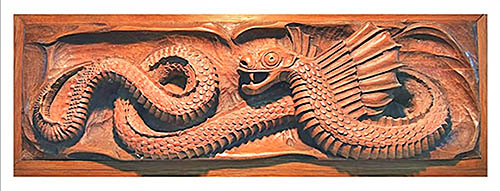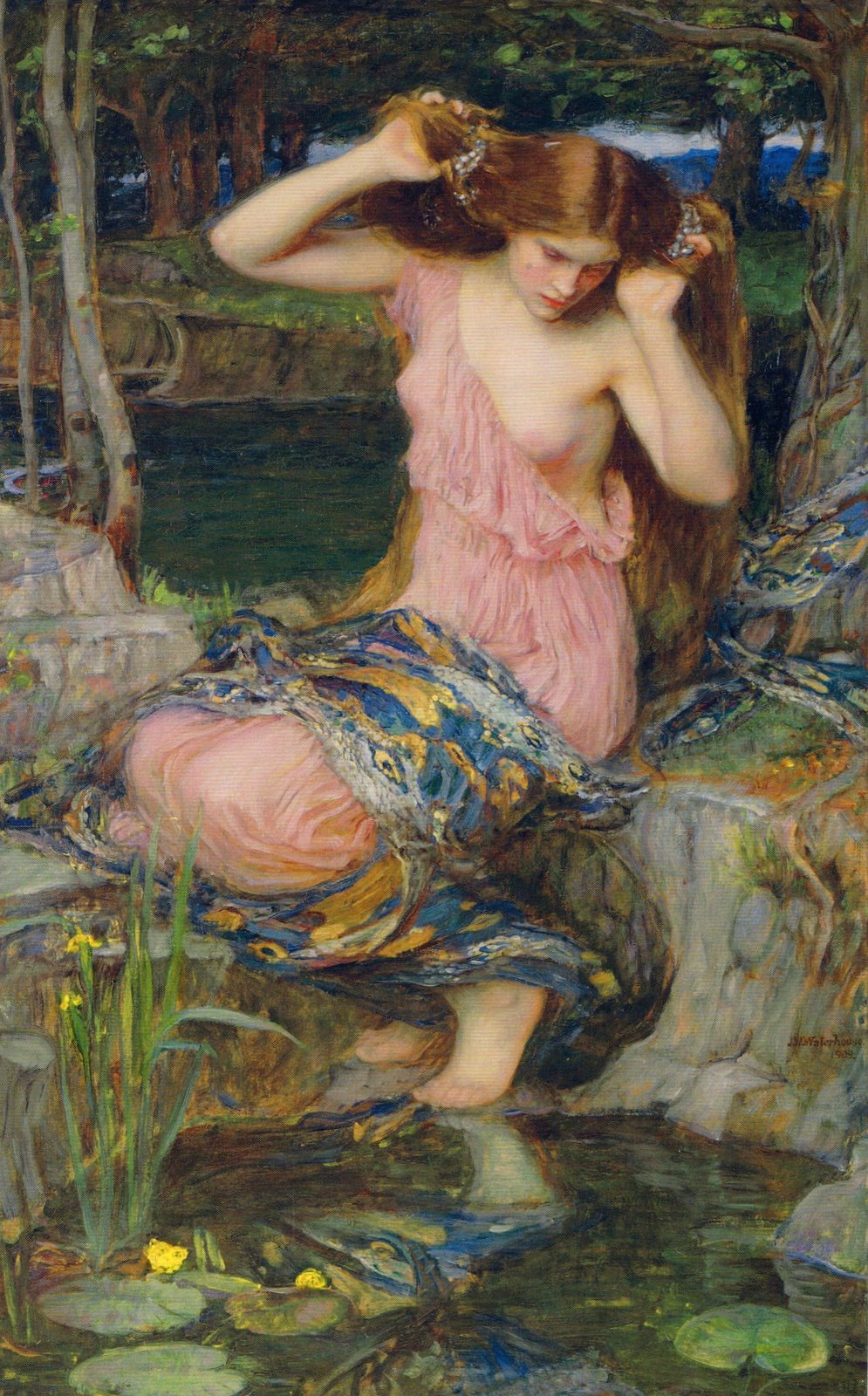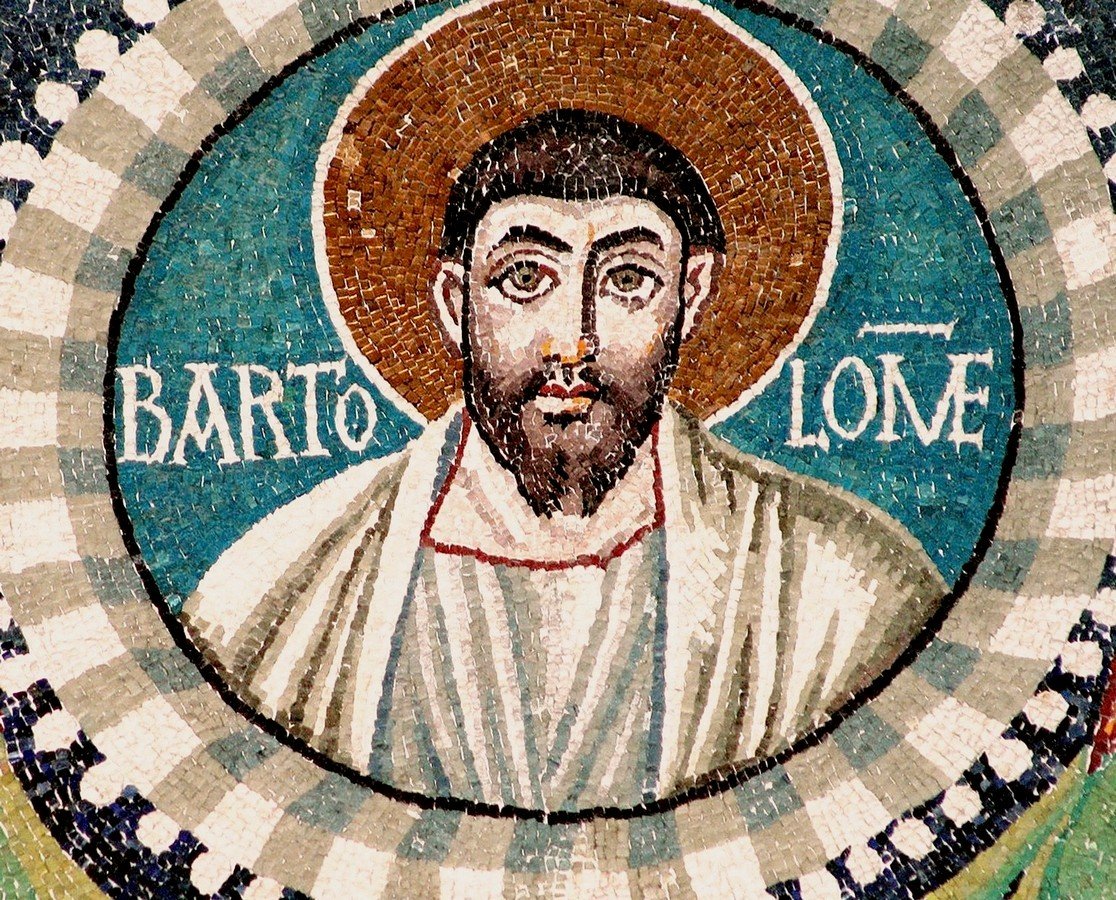|
Cuélebre
Cuélebre ( Asturian) or Culebre ( Cantabrian), is a giant winged serpent- dragon of the Asturian and Cantabrian mythology, that lives in a cave, guards treasures and keeps '' anjanas'' (also known as ''xanas'') as prisoners. Although they are immortal, the cuélebre age, and their scales become thick and impenetrable, and bat wings grow in their bodies. They must eventually flee Asturias and fly to the Mar Cuajada, a paradise located beyond the sea. They do not usually move, but when they do it, it is in order to eat cattle and people. One could kill the cuélebre by giving them a red-hot stone or a bread full of pins to consume. Its spit is said to turn into a magic stone, which heals many diseases. In Midsummer, which is a magical night in Asturian and Cantabrian folklore, it is possible for brave men to defeat the ''cuélebre'', whose spells don't take effect that night, and marry the xana and get the treasure. However, in Cantabrian areas it is said the night of Saint Barth ... [...More Info...] [...Related Items...] OR: [Wikipedia] [Google] [Baidu] |
La Guita Xica
La Guita Xica () is a dragon that appears amongst the legends of Catalonia beginning in 1890. The dragon had many names, including Guita Boja, La Guita Xica, Mulaguita, La Mulassa, Mula Fera, and Mula Guita. Its name transformed over time, originally started as Mulassa, then Mulaguita, and finally Guita by the twentieth century. The name La Mulassa comes from an older term, mulassas, meaning 'monstrous mules,' which was used in Catalan mythology to refer to mule-dragon hybrids. La Guita Xica was originally considered a demon, but has become a protective spirit over the past century. It is also called a tarasca, which is a name for draconic creatures of Spanish and Latin American folklore. La Guita Xica was half-mule and half-dragon. This comes from Catalan mountains where the mule remains a richly evocative animal. It had a strong practical importance, but it is also known for its temperament, which was disruptive and uneasy to the point where its domestication was considered u ... [...More Info...] [...Related Items...] OR: [Wikipedia] [Google] [Baidu] |
Asturian Language
Asturian (; ,Art. 1 de lLey 1/1998, de 23 de marzo, de uso y promoción del bable/asturiano [Law 1/93, of March 23, on the Use and Promotion of the Asturian Language/nowiki>] formerly also known as ) is a West Iberian languages, West Iberian Romance languages, Romance language spoken in the Principality of Asturias, Spain. Asturian is part of a wider linguistic group, the Asturleonese languages. The number of speakers is estimated at 100,000 (native) and 450,000 (second language). The dialects of the Astur-Leonese language family are traditionally classified in three groups: Western, Central, and Eastern. For historical and demographic reasons, the standard is based on Central Asturian. Asturian has a distinct grammar, dictionary, and orthography. It is regulated by the Academy of the Asturian Language. Although it is not an official language of Spain it is protected under the Statute of Autonomy of Asturias and is an elective language in schools. For much of its history, th ... [...More Info...] [...Related Items...] OR: [Wikipedia] [Google] [Baidu] |
Cantabrian Dialect
Cantabrian (, in Cantabrian) is a group of dialects belonging to Astur-Leonese. It is indigenous to the territories in and surrounding the Autonomous Community of Cantabria, in Northern Spain. Traditionally, some dialects of this group have been further grouped by the name ('from the Mountain'), ('the Mountain') being a traditional name for Cantabria due to its mountainous topography. Distribution These dialects belong to the Northwestern Iberian dialect continuum and have been classified as belonging to the Astur-Leonese domain by successive research works carried out through the 20th century, the first of them, the famous work , by Ramón Menéndez Pidal. This dialect group spans the whole territory of Cantabria. In addition, there is historical evidence of traits (such as toponyms, or certain constructions) linking the speech of some nearby areas to the Cantabrian Astur-Leonese group: * The western part of Las Encartaciones, in Biscay. * Bordering areas with Burgos ... [...More Info...] [...Related Items...] OR: [Wikipedia] [Google] [Baidu] |
Dragon
A dragon is a reptilian legendary creature that appears in the folklore of many cultures worldwide. Beliefs about dragons vary considerably through regions, but dragons in western cultures since the High Middle Ages have often been depicted as winged, horned, and capable of breathing fire. Dragons in eastern cultures are usually depicted as wingless, four-legged, serpentine creatures with above-average intelligence. Commonalities between dragons' traits are often a hybridization of feline, reptilian and avian features. Scholars believe huge extinct or migrating crocodiles bear the closest resemblance, especially when encountered in forested or swampy areas, and are most likely the template of modern Oriental dragon imagery. Etymology The word ''dragon'' entered the English language in the early 13th century from Old French ''dragon'', which in turn comes from la, draconem (nominative ) meaning "huge serpent, dragon", from Ancient Greek , (genitive , ) "serpent, giant s ... [...More Info...] [...Related Items...] OR: [Wikipedia] [Google] [Baidu] |
Asturias
Asturias (, ; ast, Asturies ), officially the Principality of Asturias ( es, Principado de Asturias; ast, Principáu d'Asturies; Galician-Asturian: ''Principao d'Asturias''), is an autonomous communities of Spain, autonomous community in northwest Spain. It is coextensive with the provinces of Spain, province of Asturias and contains some of the territory that was part of the larger Kingdom of Asturias in the Middle Ages. Divided into eight Comarcas of Asturias, ''comarcas'' (counties), the autonomous community of Asturias is bordered by Cantabria to the east, by Province of León, León (Castile and León) to the south, by Province of Lugo, Lugo (Galicia (Spain), Galicia) to the west, and by the Cantabrian Sea, Cantabrian sea to the north. Asturias is situated in a mountainous setting with vast greenery and lush vegetation, making it part of Green Spain. The region has a oceanic climate, maritime climate. It receives plenty of annual rainfall and little sunshine by Spanish ... [...More Info...] [...Related Items...] OR: [Wikipedia] [Google] [Baidu] |
Cantabrian Mythology
Cantabrian mythology refers to the myths, teachings and legends of the Cantabri, a pre-Roman Celts, Celtic people of the north coastal region of Iberia (Spain). Over time, Cantabrian mythology was likely diluted by Celtic mythology and Roman mythology with some original meanings lost. Later, the ascendancy of Christendom absorbed or ended the Paganism, pagan rites of Cantabrian, Celtic and Roman mythology leading to a syncretism. Some relics of Cantabrian mythology remain. Divinities Some relics and remnants of Cantabrian worship of protective divinities survive. One example is the Cantabrian stelae, Cantabrian stele of Barros which suggests worship of a sun god. Another example may be the Bonfires of Saint John coinciding with the summer solstice. A bronze sculpture found near the town of Herrera in Camargo, Cantabria suggests worship of a male figure. Such a figure would have been absorbed into the Religion in ancient Rome, Roman worship of Jupiter (mythology), Jupiter. Stra ... [...More Info...] [...Related Items...] OR: [Wikipedia] [Google] [Baidu] |
Treasure
Treasure (from la, thesaurus from Greek language ''thēsauros'', "treasure store") is a concentration of wealth — often originating from ancient history — that is considered lost and/or forgotten until rediscovered. Some jurisdictions legally define what constitutes treasure, such as in the British Treasure Act 1996. The phrase "blood and treasure" has been used to refer to the human and monetary costs associated with massive endeavours such as war that expend both. Searching for hidden treasure is a common theme in legend; treasure hunters do exist, and can seek lost wealth for a living. Burial Buried treasure is an important part of the popular mythos surrounding pirates. According to popular conception, pirates often buried their stolen fortunes in remote places, intending to return for them later (often with the use of treasure maps). There are three well-known stories that helped popularize the myth of buried pirate treasure: "The Gold-Bug" by Edgar Allan Poe, ... [...More Info...] [...Related Items...] OR: [Wikipedia] [Google] [Baidu] |
Anjana (Cantabrian Mythology)
The Anjana ( Cantabrian: (Western) nˈhana (Eastern) n.xa.nɜ ) (from ''jana'', a former word for witches during the Middle Ages) are one of the best-known fairies of Cantabrian mythology. These female fairy creatures foil the cruel and ruthless Ojáncanu. In most stories, they are the good fairies of Cantabria, generous and protective of all people. Their depiction in the Cantabrian mythology is reminiscent of the lamias in ancient Greek mythology, as well as the xanas in Asturias, the janas in León, and the lamias in Basque Country, the latter without the zoomorphic appearance. Oral tradition provides different explanations for the nature of the Anjana. Some say they are heavenly beings sent by God to do good deeds, and they go back to heaven after 400 years, never to return. Others, however, indicate that they are spirits of trees who take care of the forests. Anjana are described as beautiful and delicate, half a foot tall, with white skin and a sweet voice. Some are lik ... [...More Info...] [...Related Items...] OR: [Wikipedia] [Google] [Baidu] |
Mar Cuajada
Mar, mar or MAR may refer to: Culture * Mar or Mor, an honorific in Syriac * Earl of Mar, an earldom in Scotland * MAA (singer) (born 1986), Japanese * Marathi language, by ISO 639-2 language code * March, as an abbreviation for the third month of the year in the Gregorian calendar * Biblical abbreviation for the Gospel of Mark Places * Mar, Isfahan, a village in Iran * Mar, Markazi, a village in Iran * Mar, Russia, in the Sakha Republic * Marr, a region of Scotland * Mesoamerican region, an economic region * Mid-Atlantic Ridge, a ridge on the floor of the Atlantic Ocean People * Mar (surname), a Chinese and Scottish surname (including a list of people with the surname) * Mar Abhai, a saint of the Syriac Orthodox Church * Mar Amongo (1936–2005), a Filipino illustrator *Mar Cambrollé (born 1957), Spanish trans rights activist * Mar Roxas (born 1957), Filipino politician Other uses * '' MÄR'' (''Marchen Awakens Romance''), a 2003 Japanese manga series * ''Mar'' (boa ... [...More Info...] [...Related Items...] OR: [Wikipedia] [Google] [Baidu] |
Midsummer
Midsummer is a celebration of the season of summer usually held at a date around the summer solstice. It has pagan pre-Christian roots in Europe. The undivided Christian Church designated June 24 as the feast day of the early Christian martyr St John the Baptist, and the observance of St John's Day begins the evening before, known as Saint John's Eve. These are commemorated by many Christian denominations, such as the Roman Catholic Church, Lutheran Churches, and Anglican Communion, as well as by freemasonry. In Sweden, the Midsummer is such an important festivity that there have been proposals to make the Midsummer's Eve the National Day of Sweden, instead of June 6. In Finland, Estonia, Latvia and Lithuania, Midsummer's festival is a public holiday. In Denmark and Norway, it may also be referred to as St. Hans Day. History Saint John's Day, the feast day of Saint John the Baptist, was established by the undivided Christian Church in the 4th century AD, in honour of ... [...More Info...] [...Related Items...] OR: [Wikipedia] [Google] [Baidu] |
Saint Bartholomew
Bartholomew (Aramaic: ; grc, Βαρθολομαῖος, translit=Bartholomaîos; la, Bartholomaeus; arm, Բարթողիմէոս; cop, ⲃⲁⲣⲑⲟⲗⲟⲙⲉⲟⲥ; he, בר-תולמי, translit=bar-Tôlmay; ar, بَرثُولَماوُس, translit=Barthulmāwus) was one of the twelve apostles of Jesus according to the New Testament. He is also commonly identified as ''Nathanael'' or ''Nathaniel'', who appears in the Gospel of John when introduced to Jesus by Philip (who also became an apostle; John 1:43–51), although some modern commentators reject the identification of Nathanael with Bartholomew. New Testament references The name ''Bartholomew'' ( el, Βαρθολομαῖος, transliterated "Bartholomaios") comes from the arc, בר-תולמי ''bar-Tolmay'' "son of Talmai" or "son of the furrows". Bartholomew is listed among the Twelve Apostles of Jesus in the three Synoptic Gospels: Matthew, Mark, and Luke, and also appears as one of the witnesses of the Ascens ... [...More Info...] [...Related Items...] OR: [Wikipedia] [Google] [Baidu] |





.jpg)
